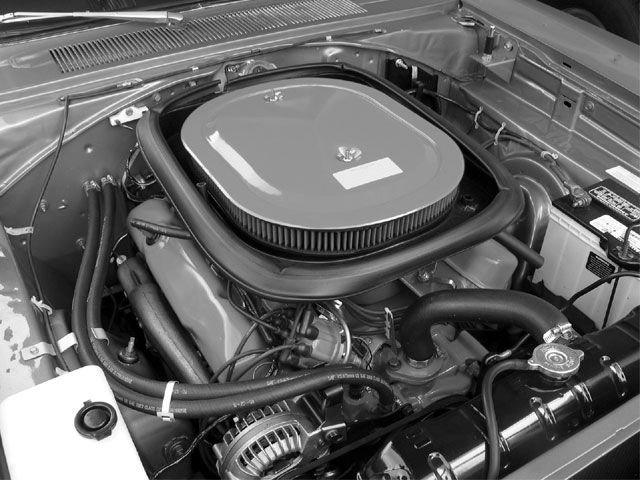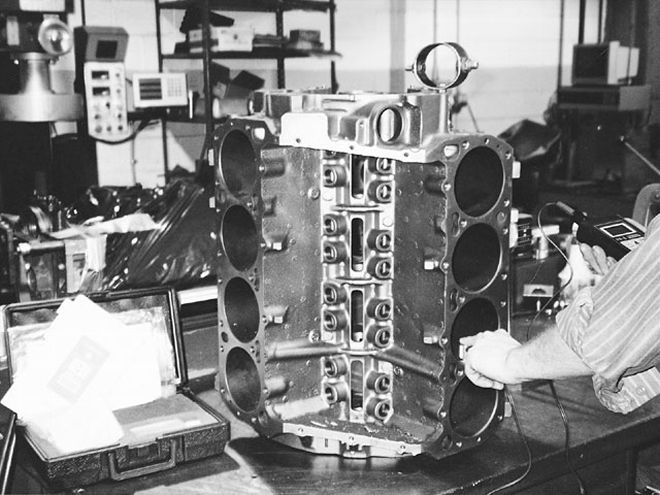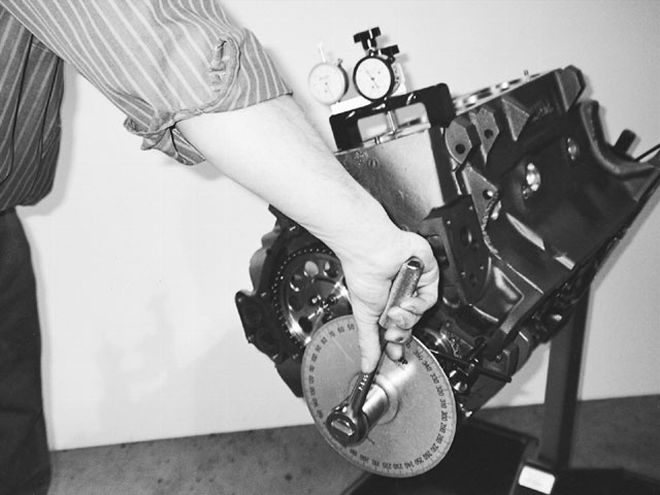
Ever since wheels were mounted to the first orange crate, the quest for gains in automotive performance has been the topic of discussion. Remember those days-hanging out with your buddies, talkin' smack about how your go-cart can whoop their go-carts any day? Times haven't changed that much. We still hang around with our buddies talkin' smack, but now it's on a grander scale.
Some guys dream of having an engine with enough billet accessories to put Boyd Coddington into early retirement. Thankfully, though, the performance-minded guys know what it takes to make a car go fast, not just look the part.
We decided to follow along as the staff at Automotive Machine in Fraser, Michigan, built a resto-looking 440 powerplant that delivers a larger-than-factory number. We say resto-looking because the engine now displaces 496 ci. It's not an exotic, uild-it-with-your-fat-wallet-because-you-have-all-the-money-in-the-world engine. It's a common-sense approach that shows what paying attention to details and parts can do.
 After the block is cleaned-and before any of the machine work is done-it is sonic checked. This process is sometimes overlooked, only to find out during the machining process that there is a problem with the block.
After the block is cleaned-and before any of the machine work is done-it is sonic checked. This process is sometimes overlooked, only to find out during the machining process that there is a problem with the block.
After the engine was built, it was installed in Doug Johnson's '69 1/2 Road Runner and put to the test on AP Engineering's Mustang chassis dyno. Doug installed Promax metering blocks so he could better tune the outboard carbs at the dyno. He also removed the factory 30cc accelerator pump and put on 50cc pieces. The center carb was jetted with 62s on both sides, and the outboard carbs were jetted identical to start-85s on the driver side and 83s on the passenger side. The vacuum secondaries had the yellow springs installed (the lightest available).
With the Runner pulled up on the dyno, the first thing to do was drill the exhaust pipe for an O2 sensor to monitor the air/fuel ratio. After the Six-barrel was brought up to operating temp, we made the first pull, which came in at 356 hp at 5,100 rpm and 401 lb-ft of torque at 4,200. It was a little less than expected, but A/F was showing the engine running a little lean.
 With the pistons installed, the number 1 piston is brought up to TDC in order to begin the cam degreeing procedure per the cam card.
With the pistons installed, the number 1 piston is brought up to TDC in order to begin the cam degreeing procedure per the cam card.
For the second pull, we increased the jetting to 87 on the driver side and 85 on the passenger side on both outboard carbs. Timing was bumped from 36 degrees to 39 degrees total advance. The second pull responded with 376 hp at 5,200 rpm, and 417 lb-ft of torque at 4,200. The A/F ratio was still a tad lean, dancing in the 13.6 range.
On the third pull, we upped the jetting to 88 on the driver side and 86 on the passenger side. This pull responded with an A/F ratio of 12.7:1 at peak horsepower, but the horsepower numbers didn't show a substantial increase.
The final tally was 377 hp at 5,200 rpm, and 417 lb-ft of torque at 4,200. It was almost a mirror image of the previous pass. We figured there weren't any gains from jetting, so we played with the timing some more. We began by moving it back down to 36 degrees total and lost 4 hp and 5 lb-ft of torque from our peak numbers. Once we moved the timing back up to 39 degrees, we were ready to hit the track for some testing.
Getting a car in the F.A.S.T. class of racing to launch requires a lot of finesse with the throttle pedal. If you're wondering why, just take your stock, Mopar-powered anything out on the street and try to take off really quickly without spinning the little repop redline tires on your ride. With the finesse required-and the fact that Doug leaves his car in Drive when he races-the Road Runner has still posted a best quarter-mile time of 12.16 at 115 mph. Give him a little more time behind the wheel and 11s are definitely within reach. Keep in mind that this engine uses a stock intake manifold with three Holley carbs, as well as stock exhaust manifolds.
440 Head Flow Test, FlowedWith A 4.320 Bore At 28 InchesInches LiftIntakeExhaust W/No Tube.{{{100}}}22.494.4.{{{200}}}150.0102.2.{{{300}}}207.8165.4.400252.9175.4.500285.2196.5.{{{600}}}292.7208.0 .700301.1237.8
Dyno Results
RPMTQHP3,6002922003,700316223 3,8003752723,9003952944,0004063104,1004153244,2004173334,3004133384,4004073424,5004073494,6004053554,7004053624,8004033684,9003993725,0003933755,1003873765,2003803775,3003713755,4003643745,5003583755,6003483715,7003403705,8003293635,9003063456,000289329
Checked At The Rear Wheels On The Mustang Chassis Dyno